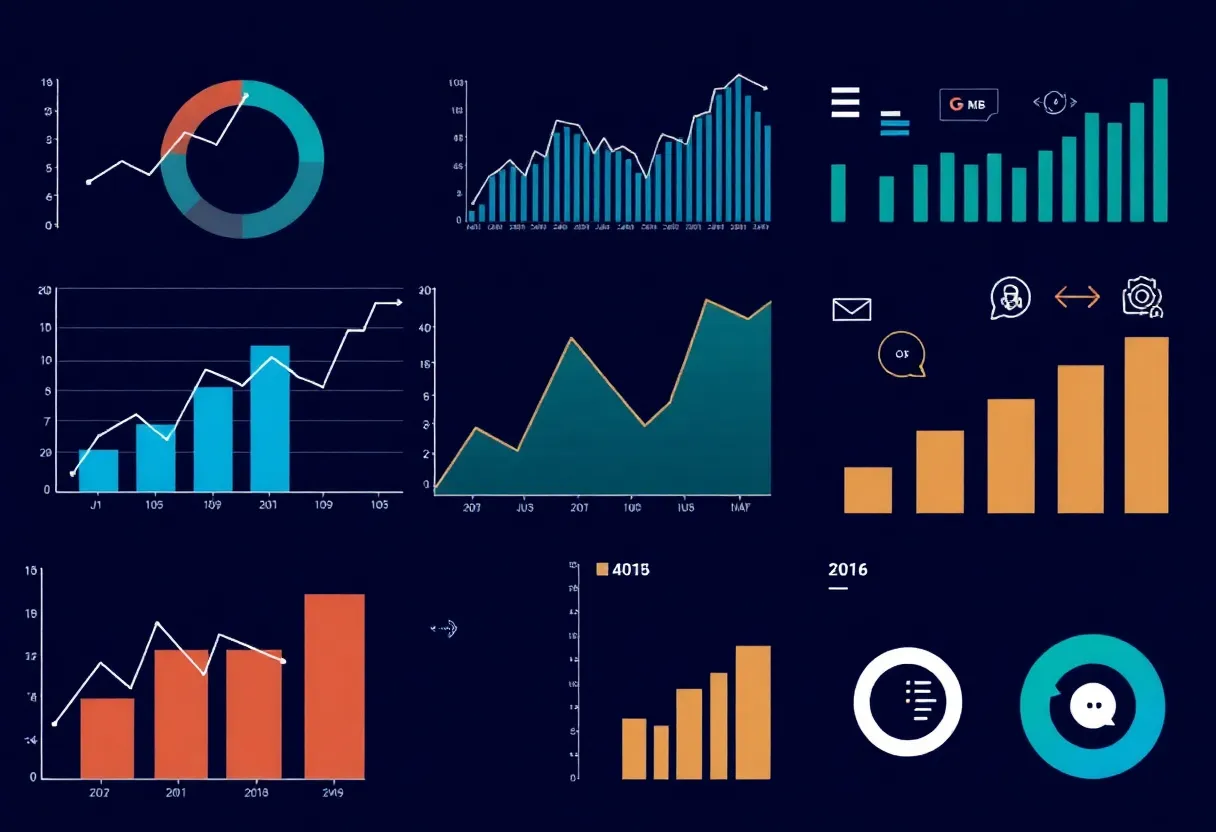How Can You Use Behavioral Analytics to Fine-Tune Your Digital Marketing Strategies?
In an increasingly competitive digital landscape, understanding customer behavior is essential for businesses seeking to optimize their marketing strategies. Behavioral analytics offers critical insights into how customers interact with products and services online. By leveraging these insights, companies can refine their approaches, boost engagement, and enhance conversion rates.
Understanding Behavioral Analytics
Behavioral analytics refers to the process of collecting and analyzing data on user interactions with online platforms. This includes tracking page views, clicks, time spent on pages, and user journeys across websites. The ultimate goal is to decipher patterns and trends that indicate how customers make decisions.
Key Components of Behavioral Analytics
When implementing behavioral analytics, consider the following key components:
- User Segmentation: Categorizing users based on demographics, preferences, and behavior.
- Event Tracking: Monitoring specific actions users take within your digital properties.
- Clickstream Analysis: Analyzing the paths users take as they navigate your website.
- Conversion Rate Tracking: Assessing the percentage of users who complete a desired action.
Why Behavioral Analytics Matters
Behavioral analytics provides several advantages that can significantly improve digital marketing strategies:
Enhanced Customer Understanding
By observing real-time behavioral data, businesses can gain a comprehensive understanding of their customers’ needs and expectations. This allows for more personalized marketing efforts, which can lead to higher engagement and loyalty.
Optimization of User Experience
Behavioral analytics identifies friction points in the customer journey. Companies can leverage this information to streamline website navigation, enhance content relevance, and ultimately create a more satisfying user experience.
Data-Driven Decision Making
With access to actionable insights, organizations can make informed decisions regarding their marketing strategies. Rather than relying on assumptions, businesses can adopt a data-driven approach that is likely to yield better results.
Strategies for Using Behavioral Analytics
To effectively use behavioral analytics in fine-tuning digital marketing strategies, companies should consider the following steps:
1. Implement Analytics Tools
Select appropriate behavioral analytics tools to gather data effectively. Popular platforms include Google Analytics, Hotjar, and Mixpanel. Each tool offers unique features tailored to various business needs.
2. Define Objectives
Clearly outline the objectives of your marketing campaigns. Whether aiming to increase conversion rates, enhance user retention, or improve the average order value, having specific goals will guide your analysis and strategy refinement.
3. Analyze User Conduct
Regularly review user behavior data to identify patterns and key performance indicators (KPIs). Look for trends in how visitors interact with different content pieces and which channels drive traffic effectively.
4. Test and Optimize
Utilize A/B testing to determine the effectiveness of different marketing strategies. Make use of the insights gained from behavioral analytics to tweak call-to-action buttons, landing pages, and email campaigns for maximum impact.
5. Personalize Marketing Efforts
Create personalized experiences based on user data. By tailoring marketing messages to individual preferences and behavior, businesses can significantly enhance engagement and foster loyalty.
6. Continuously Monitor and Adjust
Behavioral analytics is not a one-time endeavor. Continuously monitor user interactions and adjust strategies based on emerging trends and feedback. This iterative process allows for ongoing improvement in marketing efforts.
Challenges in Implementing Behavioral Analytics
While behavioral analytics offers substantial benefits, challenges can arise:
Data Privacy Concerns
With increasing regulations around data privacy, businesses must navigate how to collect and use data ethically. Ensuring compliance while gaining insights is crucial.
Data Overload
Analytics can lead to information overload. Organizations must focus on relevant data points that align with their specific goals. Over-analysis could lead to paralysis, hindering decision-making.
Skill Gaps
Employees may require training to interpret complex data accurately. Investing in training programs can bridge this knowledge gap and empower teams to make informed decisions.
Future Trends in Behavioral Analytics
As technology evolves, so will behavioral analytics. Here are some trends to watch:
Integration of Artificial Intelligence
AI is poised to enhance behavioral analytics through predictive modeling and automated data collection processes. This integration will provide deeper insights into future user behaviors.
Greater Emphasis on Real-Time Data
Real-time analytics will become increasingly vital in crafting instant marketing responses. This will allow businesses to tailor their strategies on-the-fly based on user interactions.
Focus on Omnichannel Experiences
As users engage across various platforms, a cohesive omnichannel approach will be essential. Behavioral analytics will provide a holistic view of user interactions, enabling seamless experiences across touchpoints.
Conclusion
Implementing behavioral analytics is a powerful strategy for businesses looking to optimize their digital marketing efforts. By gaining insights into customer behavior, organizations can tailor their approaches to meet user needs effectively. From enhanced user experiences to data-driven decision-making, the benefits are significant. As technology continues to evolve, those who embrace behavioral analytics will be better positioned to stay ahead in the competitive landscape. Using behavioral analytics wisely can lead to improved engagement, higher conversion rates, and ultimately, a stronger brand presence in the digital space.








